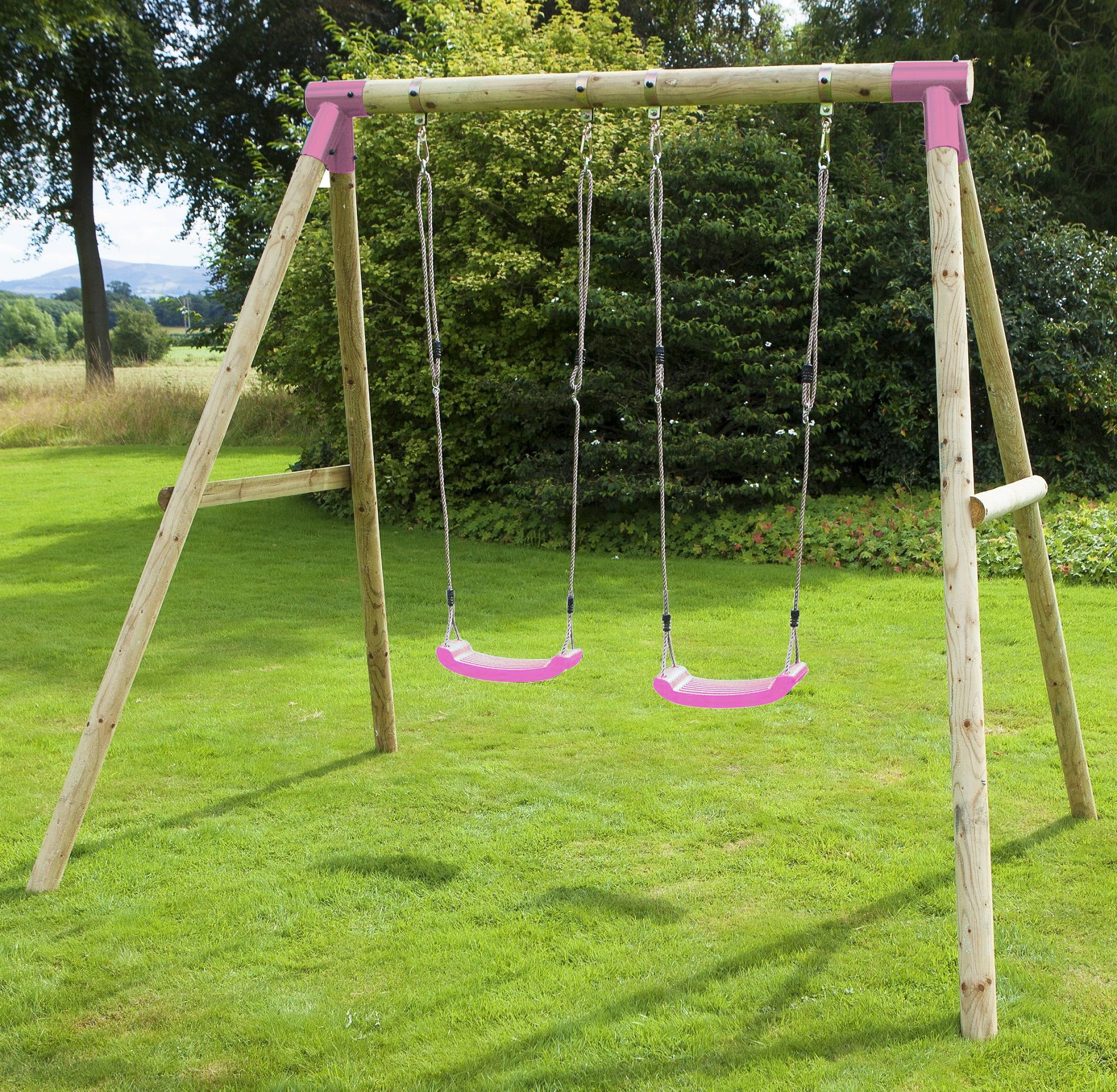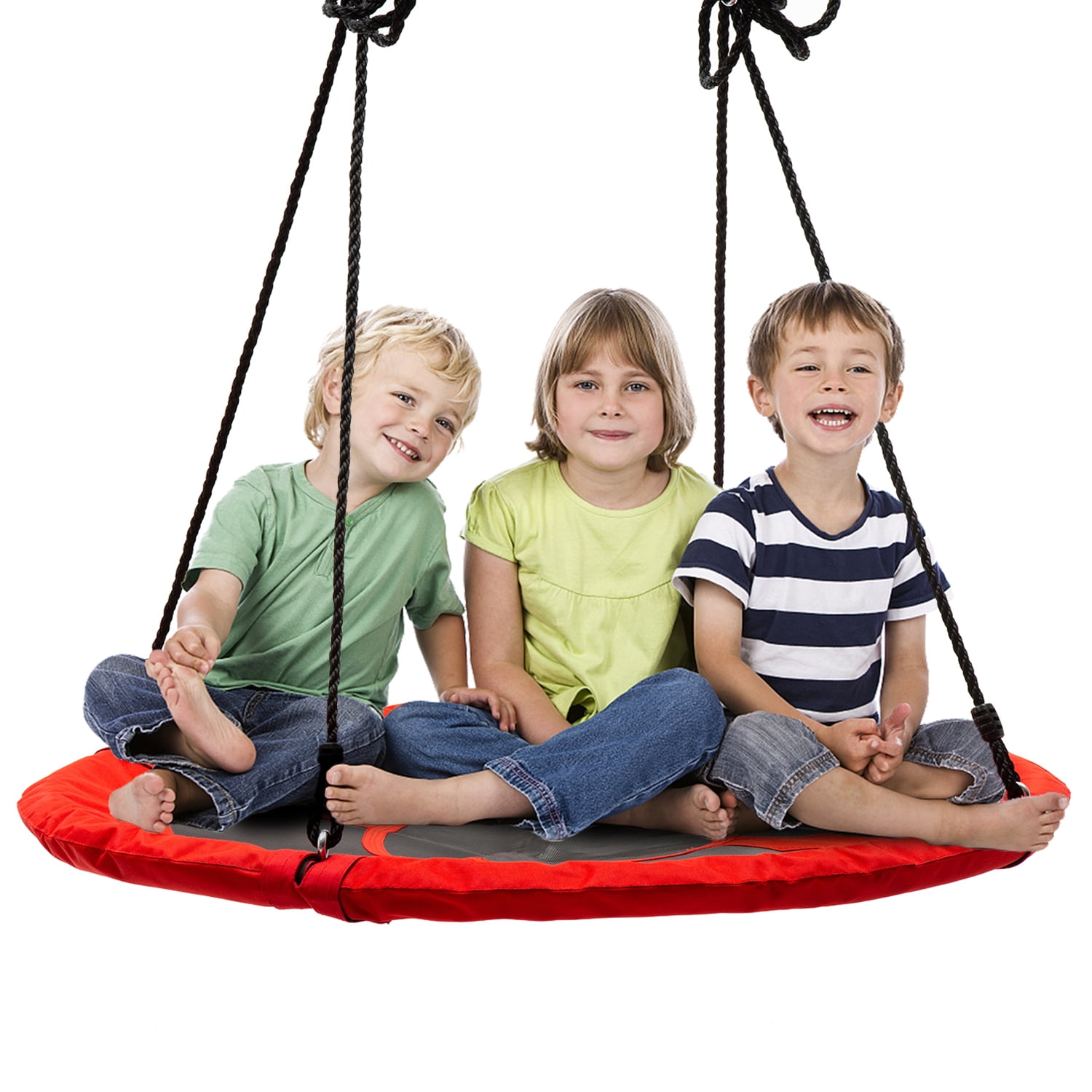Safety Considerations for Child Outdoor Swing Chairs

Ensuring the safety of children while they play is paramount, and outdoor swing chairs are no exception. It is essential to prioritize safety by selecting the right swing chair, installing it correctly, and being aware of potential hazards.
Key Safety Features, Child outdoor swing chair
Choosing a swing chair with built-in safety features is crucial. Here are some essential elements to consider:
- Sturdy Construction: Look for a swing chair made from durable materials like metal or high-quality plastic that can withstand the weight and movement of a child. The frame should be robust and free from any sharp edges or protruding parts that could cause injury.
- Protective Padding: The swing seat should have adequate padding to cushion the child during swings and prevent injuries from bumps or falls. Look for padding that is thick, soft, and made from materials that are resistant to tearing or wear and tear.
- Appropriate Height: The swing chair should be at a height that is suitable for the child’s age and size. The child’s feet should be able to touch the ground while sitting on the swing. This helps prevent injuries from falling and promotes a sense of security.
- Safety Harness: A safety harness is a vital component for young children, especially toddlers. The harness should be adjustable to fit the child snugly and prevent them from falling out of the swing.
- Weather Resistance: The swing chair should be weather-resistant, especially if it is going to be left outdoors. Look for materials that are resistant to rain, sun, and other elements that can cause damage.
Safe Installation and Setup
Correct installation is crucial to ensure the stability and safety of the swing chair:
- Secure Hanging Points: The swing chair should be hung from strong, secure hanging points that can withstand the weight of the child and the forces generated during swinging. This might involve using sturdy tree branches or specialized swing sets designed for outdoor use.
- Proper Height: The swing should be hung at a height that allows the child’s feet to touch the ground while sitting on the swing. This helps prevent injuries from falling and promotes a sense of security.
- Distance from Obstacles: The swing should be installed at a safe distance from any obstacles, such as walls, fences, or trees. This will prevent the child from colliding with anything during swinging.
- Regular Inspections: Regularly inspect the swing chair and its hanging points for any signs of wear or damage. If any damage is found, repair or replace the swing chair immediately.
Potential Hazards and Solutions
Being aware of potential hazards associated with swing chairs is essential for ensuring child safety:
- Choking Hazards: Small parts, such as loose screws or nuts, can be a choking hazard for young children. Inspect the swing chair regularly for any loose parts and secure them properly.
- Sharp Edges: Sharp edges on the swing frame or seat can cause cuts or abrasions. Look for a swing chair with smooth, rounded edges to minimize the risk of injury.
- Overcrowding: Never allow more than one child on a single swing chair at a time. Overcrowding can lead to instability and increase the risk of falls or injuries.
- Supervision: Always supervise children while they are using a swing chair. This allows you to intervene if necessary and prevent accidents.
- Weather Conditions: Avoid using a swing chair during strong winds or inclement weather. Strong winds can make the swing unstable, while rain or snow can make the swing slippery and increase the risk of falls.
Benefits of Child Outdoor Swing Chairs

Swing chairs offer a plethora of benefits for children, promoting physical, emotional, and social development. From enhancing motor skills to fostering a sense of joy and connection, these playful seats provide a valuable experience for young minds and bodies.
Physical Benefits
Swinging on a chair engages various muscle groups, improving balance, coordination, and overall motor skills. The rhythmic motion of swinging helps children develop a sense of their body in space and strengthens their core muscles.
- Improved Balance and Coordination: Swinging requires children to maintain their balance and adjust their movements to stay upright. This constant adjustment enhances their sense of equilibrium and improves their overall coordination.
- Enhanced Motor Skills: Swinging involves a range of movements, from gripping the chains to controlling the momentum. This helps develop fine and gross motor skills, improving hand-eye coordination and muscle control.
- Strengthened Core Muscles: Swinging engages the core muscles, including the abdominal muscles, back muscles, and obliques. This strengthens the core, which is essential for stability and overall physical development.
Emotional Well-being
The gentle rocking motion of a swing chair can have a calming effect on children, reducing stress and anxiety. Swinging can also provide a sense of freedom and joy, encouraging a positive emotional state.
- Stress Reduction: The rhythmic motion of swinging can have a calming effect on the nervous system, reducing stress and anxiety levels. This can be particularly beneficial for children who are feeling overwhelmed or agitated.
- Sense of Joy and Relaxation: Swinging can be a fun and enjoyable activity for children, providing a sense of freedom and relaxation. This can help promote a positive emotional state and reduce feelings of boredom or frustration.
Social Benefits
Swing chairs can encourage social interaction and play among children. Sharing a swing chair or taking turns can foster cooperation and teamwork, while swinging together can create a sense of shared experience and connection.
- Encourages Interaction and Play: Swing chairs can provide a focal point for social interaction and play among children. They can share stories, sing songs, or simply enjoy the experience of swinging together.
- Promotes Cooperation and Teamwork: Sharing a swing chair or taking turns can teach children about cooperation and teamwork. They learn to negotiate and work together to achieve a common goal.
- Shared Experiences and Connection: Swinging together can create a sense of shared experience and connection among children. It can be a bonding activity that strengthens relationships and creates lasting memories.
While child outdoor swing chairs provide a sense of whimsical play, a more mature approach to relaxation can be found in the natural gear lounge chair. These chairs, crafted from sustainable materials, offer a haven of comfort and tranquility, much like a child’s swing chair evokes a sense of joyful movement.
Both provide a unique and valuable experience, albeit tailored to different stages of life.
A child’s outdoor swing chair provides a delightful way for young ones to enjoy the fresh air and sunshine. If you’re considering building your own swing chair, you may find inspiration in the comprehensive collection of outdoor chair woodworking plans available online.
These plans can guide you through the process of crafting a sturdy and safe swing chair that will bring years of enjoyment to your little ones.